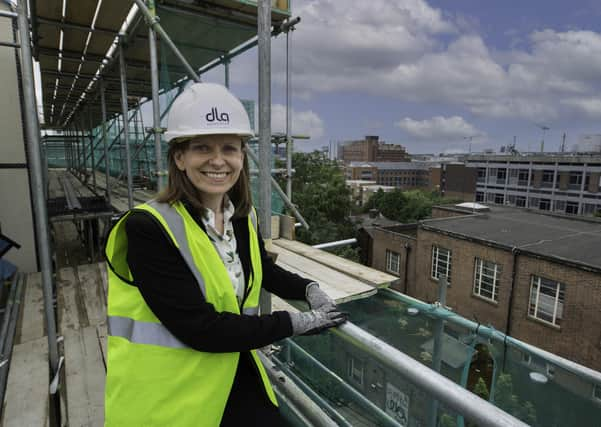Why architecture needs more female role models


Sue Sparling, director at DLA Architecture in Leeds said that while many women choose to study architecture at university, the number who complete the full qualification is far fewer than their male counterparts.
Ms Sparling, the firm’s only female director, has spent the last 23 years helping to reshape Leeds city centre in a sector that is dominated by men.
Advertisement
Hide AdAdvertisement
Hide Ad“I was talking to our student today and she said the fact that she sees me doing this job means that she feels able to do that,” she told The Yorkshire Post. “Training takes a long time so we need a way of encouraging young women to stay in the profession. I’m very passionate about bringing people on.”
Over the years Ms Sparling has been instrumental in designing many of the city’s well-known landmarks, including One Brewery Wharf, Roberts Wharf, and Echo Central 1 & 2. She was also involved in the planning stages of Majestic, Channel 4’s headquarters.
Current projects include 12 King Street - the former office of law firm Walker Morris, which is being refurbished into a seven-storey office building with a communal roof terrace and sky lounge.
Designing buildings both within a pandemic and for a post-pandemic future brings both challenges and opportunities.
Advertisement
Hide AdAdvertisement
Hide Ad“It’s an interesting project because it’s hit a time when demand for offices is changing. We went through a whole design change to make the central core areas adaptable so that if we went through anything like covid again, there can be easier one-way systems,” Ms Sparling said. “But at the same time we’ve created spaces for connections and collaboration.”
She added: “It’s a smart building so there’s less contact because the surfaces and lighting have bluetooth connectivity. There’s also an app for facilities management.
The client was already on board with smart offices but what covid did was reinforce the need to invest in that technology.”
Meanwhile, the sustainability agenda is also gathering pace.
Advertisement
Hide AdAdvertisement
Hide AdTwo of DLA’s current projects - the former Technology Campus site, which is being transformed into student accommodation, and St Cecilia Place, which consists of 352 apartments near the Quarry Hill masterplan - are both looking to connect to the Leeds PIPES heating network.
The network provides low carbon heat and hot water, reusing heat which is already being produced at Leeds’s Recycling and Energy Recovery Facility.
Discussions for the student tower are centred around making it more environmentally-friendly through sustainable concrete. “A lot of the discussions we’re having on that site started on day one which is really interesting because we’re able to influence that,” Ms Sparling said.
Creating more green space is a key for the future of Leeds city centre. “It’s about creating green and liveable cities,” Ms Sparling said. “We want to create better parks and places so people want to be in the city centre. It’s about community spirit too, small changes as well as big changes.”
Advertisement
Hide AdAdvertisement
Hide AdMeanwhile, new buildings are predicted to get taller. “There’s an aspiration to put Leeds on the map more,” she said. “We need bold buildings as wayfinding points but they still should feel part of Leeds. It’s about creating something that people identify with.”
Comment Guidelines
National World encourages reader discussion on our stories. User feedback, insights and back-and-forth exchanges add a rich layer of context to reporting. Please review our Community Guidelines before commenting.